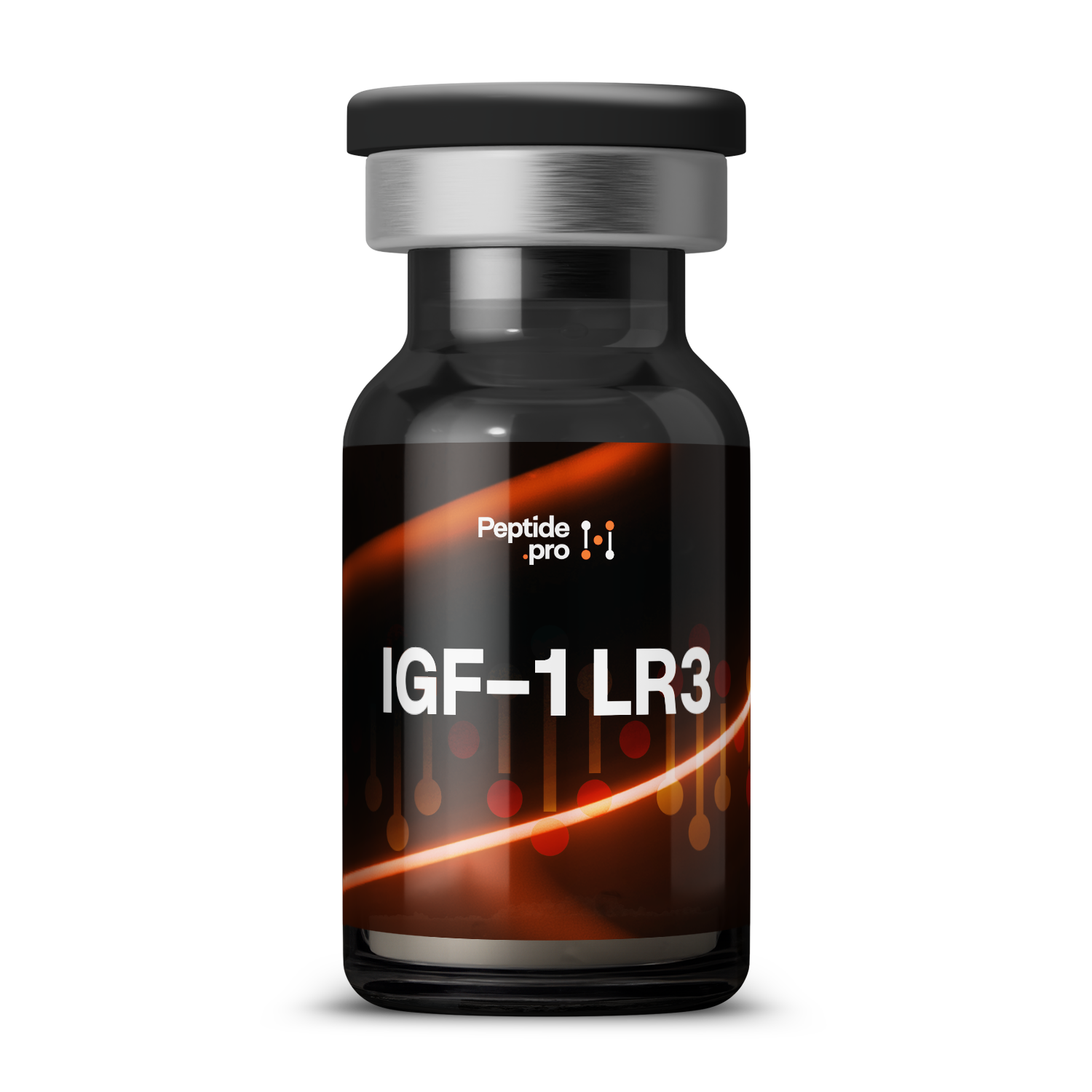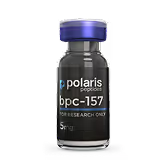Compound Overview
About the product
The peptide comprises 83 amino acids: the full IGF-1 sequence plus a 13-residue extension at the N-terminus and an Arg³ substitution. It retains the three native disulfide bonds critical for receptor binding. No non-natural amino acids are included beyond these sequence changes. Recombinant expression in bacterial systems yields >95 % pure protein, confirmed by HPLC and mass spectrometry.
IGF-1 LR3 binds the IGF-1 receptor with high affinity, activating the PI3K/Akt and MAPK signaling pathways that drive protein synthesis and cell survival. Reduced interaction with IGF-binding proteins increases its half-life (to ~20–30 hours) and bioavailability. Enhanced receptor activation promotes anabolic effects in muscle and other tissues. Downstream, these signals support growth, repair, and metabolic regulation.
The peptide is studied primarily for its anabolic and tissue-repair properties. In human research, IGF-1 LR3 analogues support lean-body-mass maintenance and may accelerate wound healing when locally applied. It also modulates glucose uptake and may improve metabolic markers in catabolic conditions. Investigations continue into its potential in muscle-wasting diseases and regenerative medicine.
Reported IGF-1 LR3 side effects include mild, transient hypoglycemia (low blood sugar) and occasional injection-site discomfort. No serious hormonal imbalances have been documented in short-term studies. Safety data for long-term use, pregnancy, and lactation are not available. Monitoring of blood-glucose levels and general metabolic panels is recommended during research use.
IGF-1 LR3 is produced by recombinant DNA technology in Escherichia coli, followed by in-column refolding to form disulfide bonds. The protein is purified via ion-exchange and reverse-phase HPLC to achieve >95 % purity. Mass spectrometry and bioassays confirm correct folding and bioactivity. Production follows good laboratory–practice standards for investigational proteins.
IGF-1 LR3 is classified for investigational research use only and is not approved by the U.S. FDA, EMA, or other major regulatory agencies. It cannot be prescribed or sold as a therapeutic. Laboratories may obtain it under investigational-new-drug or equivalent frameworks. No clinical or over-the-counter formulations exist.
IGF-1 LR3 dosage in research protocols has typically ranged from 20 to 50 µg/kg administered subcutaneously once daily. Some studies explore lower maintenance doses after an initial loading phase. No standardized dosing guidelines exist outside approved research designs. All administration should follow institutional review–board–approved protocols.
- Do restrict use to IRB-approved research settings with medical oversight.
- Do monitor blood-glucose and IGF-1 levels regularly.
- Don’t combine with other growth-factor agents without justification.
- Don’t use during pregnancy, lactation, or in patients with active malignancy.
- Q: How long does IGF-1 LR3 remain active?
- A: Its half-life is approximately 20–30 hours, compared with ~12 hours for native IGF-1.
- Q: Does it cause more hypoglycemia than IGF-1?
- A: It may cause mild hypoglycemia; close monitoring is advised.
- Q: Can it be taken orally?
- A: No; only parenteral routes have been studied.
For research use only. Not approved for medical use.


